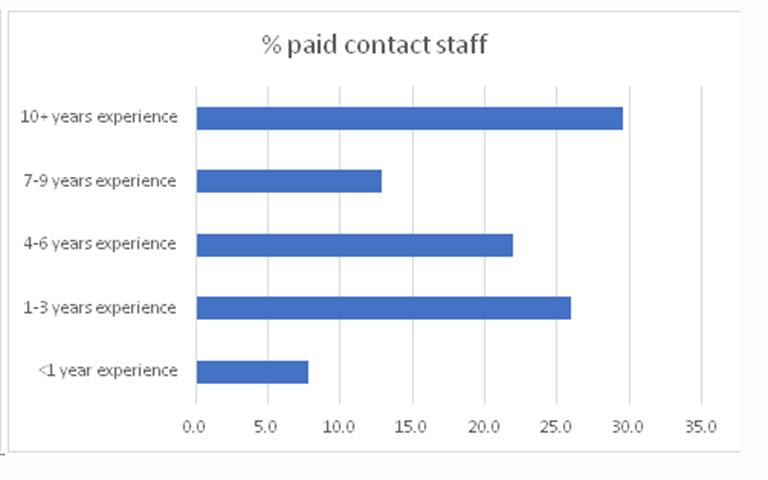
24 AugNew workforce data confirms enduring workforce challenges
Results from the 2021 Early Childhood Education and Care (ECEC) ] National Workforce Census have been released. The census was compulsory for Commonwealth-funded providers but optional for kindergartens. Over two-thirds of sessional kindergartens participated, meaning the data provided is robust across the sector. The data below refers to Victoria unless otherwise stated.
The workforce has increased over time, growing to nearly 240,000 staff in 2021. Centre-based day care services (CBDC) constituted the highest proportion of the workforce with 67.7 per cent. CBDC also saw the largest rise in ECEC workers, with a 34 per cent increase from the 2016 census data collection.
Interestingly, all states and territories observed growth in their ECEC workforce size since 2016, except Victoria which noted a decrease of 0.9 per cent to 50,238 excluding kindergarten staff.
Whilst most staff are aged under 39, over one in five staff are aged 50 or over.
It was found the distribution of hours worked in the ECEC were composed of similar proportions of short part-time (under 19 hours), long part-time (20-34 hours) and full-time. However, kindergarten staff were far more likely to work short part-time hours, with nearly half of all Victorian kindergarten staff employed for short part-time hours.
Almost all staff have an ECEC qualification, with over half qualified with a diploma, followed by certificate and bachelor qualifications. Staff with bachelor’s degrees and diplomas are three times more likely to upskill than Certificate III staff.
In Victoria, around a third of ECEC-trained staff have less than three years of experience, whilst nearly a third have over ten years of experience as the graph below shows.

Staff without ECEC qualifications are most likely to have less than one year of experience.
What does this mean for Victoria’s ECEC workforce?
The data shows a significant proportion of the workforce is likely to retire in the next ten years. This poses a challenge and opportunity for the future, to maximise opportunities to retain and harness expertise from longstanding staff as they head towards retirement. Gradual pathways to retirement, which may include engagement as coaches and mentors, could be developed to maximise workforce attachment.
The data also shows kindergarten teachers currently work short hours. In light of commitments to 30 hours of pre-prep within a decade and the need for around 10,000 teachers to meet kindergarten expansion, there may be opportunities to attract teachers seeking full-time work to meet additional workforce demands. National data shows we need a 20 per cent increase in ECEC teachers in the next decade.
The low levels of Certificate III level staff seeking to upskill are concerning, especially given new requirements for staff to hold a Certificate III before undertaking a diploma. ELAA will continue to monitor trends, and would welcome discussions with members on ways to support greater levels of staff seeking to upskill.




